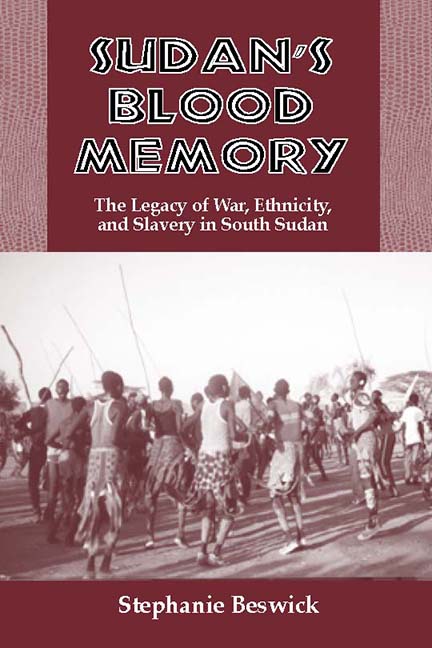Book contents
- Frontmatter
- Dedication
- Contents
- Maps
- Preface
- Acknowledgments
- A Note on Orthography and Languages
- A Note on Sources
- Map
- 1 Introduction
- 2 Geography and Brief History of Sudan
- 3 The Changing Nilotic Frontier
- The Ethno-Historical Formation of Southern Sudan
- 4 Slave Raids, Wars, and Migrations
- 5 Communities of the Sobat/Nile Confluence: The Padang
- 6 Communities on the Eastern Nile: The Bor
- 7 Communities in the Southwest: The Southern Bahr el-Ghazal
- 8 Communities in the Northwest: The Northern Bahr el-Ghazal
- The Ascendancy of the Dinka in Southern Sudan
- Foreign Intrusion and Its Consequences
- Notes
- Glossary
- Bibliography
- Index
6 - Communities on the Eastern Nile: The Bor
from The Ethno-Historical Formation of Southern Sudan
Published online by Cambridge University Press: 23 July 2019
- Frontmatter
- Dedication
- Contents
- Maps
- Preface
- Acknowledgments
- A Note on Orthography and Languages
- A Note on Sources
- Map
- 1 Introduction
- 2 Geography and Brief History of Sudan
- 3 The Changing Nilotic Frontier
- The Ethno-Historical Formation of Southern Sudan
- 4 Slave Raids, Wars, and Migrations
- 5 Communities of the Sobat/Nile Confluence: The Padang
- 6 Communities on the Eastern Nile: The Bor
- 7 Communities in the Southwest: The Southern Bahr el-Ghazal
- 8 Communities in the Northwest: The Northern Bahr el-Ghazal
- The Ascendancy of the Dinka in Southern Sudan
- Foreign Intrusion and Its Consequences
- Notes
- Glossary
- Bibliography
- Index
Summary
While many Dinka clans remained near the Nile/Sobat confluence in the sixteenth century a number forged south beyond the Sobat River. Some migrated as far as the modern-day town of Bor on the eastern banks of the Nile. Others had also located themselves southeast of the Sobat River towards the modern-day borders of Ethiopia. The Dinka of the Eastern Nile from south of the Sobat River to Bor town are today referred to as the Bor Dinka. This confederation possesses six major groups including, from north to south, the Ghol (or Hol), the Nyarruweng, the Eastern Twic, the Bor- Atoc, the Bor-Gok, and the Thain. Today the Bor are separated from their northern Padang neighbors by the Nilotic Nuer (see chapter 16).
The Ghol (or Hol) Dinka
There are four major sections among the Ghol: the Nyiel, Pathal (Patel or Pathien), Angac, and Duor (or Aduor). Oral histories claim that centuries ago after these Dinka left the junction of the Blue and White Niles (at what is now the modern capital city of Khartoum in Northern Sudan) some Dinka arrived in Renk and settled. This region later became Padang Dinka country. Others over time filtered further south up the Nile. Ghol recent history claims that they are related to the Ador, one of the two big sections of the Ciec Dinka, who now reside west of the Nile. According to Barnaba Wuor, Samuel Majak Piok, and Deng Malwal Mabur Mahboub: “We fought with the Ciec … and then we crossed back towards the eastern bank of the Nile. This split among the Ador (Aduor) came about because we quarreled over grazing land. So we left under the leadership of Thorcok Ring who was a powerful magician [priest]. Before we left we killed a bull and we were given a thigh bone, ghol. After we left we maintained this name Ghol for our people and we are the Ghol-Ador [Aduor] people.”
Another variation of Ghol history recounts that the Duor who crossed the nile from west to east had been accompanied by three other Dinka clans, the Nyiel, Angac, and Patel. The Nyiel had been part of the Angac at one time west of the Nile and originally occupied the area around Lake Jur west. Later they came to reside in the Ghol country in the geographic area up to Khor Fulus.
- Type
- Chapter
- Information
- Sudan's Blood Memory , pp. 54 - 63Publisher: Boydell & BrewerPrint publication year: 2004



